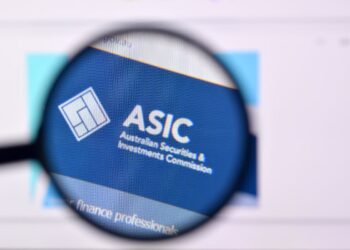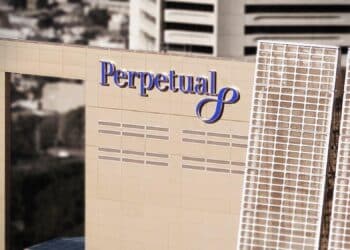Conversations at dinner parties and barbeques have very rarely been about superannuation, but the legislative changes coming out of the 2006 Federal Budget changed all that.
For most Australians, Peter Costello’s ‘simpler super’ catchphrase announced superannuation as a viable investment vehicle and, for them, that is where the story ends.
However, Vanguard retail products and technical services manager Michael Houlihan believes there is much more to the story when it comes to self-managed superannuation funds (SMSF).
“People have been recognising for some time now that self-managed funds offer distinct advantages over traditional super fund membership,” he said.
“So it is important to realise that the popularity of these funds has not been an overnight occurrence.”
Window of opportunity
For Houlihan, the July 1 rush in SMSF creation was less about the Government’s so-called $1 million window of opportunity and much more about a longer-term popularity.
“The overall popularity of self-managed funds really dates back a number of years,” he said.
“Increases in fund set-ups were already taking place as far back as 2003-04, well before the May-June peaks we’ve recently seen.”
Graeme Colley, technical manager of ING-based SuperConcepts, said recent growth in the self-managed fund arena had definitely been spurred on by the Government’s undeducted transitional contribution cap, but agreed that this was not the sole reason.
“In the wake of choice of fund, the industry as a whole has received a great deal of publicity,” he said.
“And that has served to get a lot of people thinking a lot more about superannuation. They’ve been forced to ask themselves if they need their personal assets inside or outside super and, naturally, self-managed funds have come into the equation.”
Colley added that prior to the 2006 Budget, average creation rates for SMSFs were around 1,800 funds per month before spiking initially to 3,000 in September/October of 2006 and peaking at 4,000 in April/May of this year.
From a legal perspective, Michael Hallinan, special counsel at Townsends Business and Corporate Lawyers, also believes the position of SMSFs as the fastest growing segment of the superannuation marketplace is based on enduring trends rather than any one-off event.
“Generally, people who had the resources to be operating self-managed funds were already doing so, and therefore were not significantly influenced by any million dollar opportunity,” he said.
“For most, it was a matter of moving forward strategies that were already in place and shifting assets accordingly. I’d say that any new SMSF establishments that did take place were probably a reflection of self-managed fund benefits becoming more widely known.”
At base, it seems those savvy about self-managed super agree on two points: that the popularity and growth of SMSFs is here to stay; and that irrespective of that long-term trend, the $1 million opportunity to transfer assets in-specie to a super fund could not help but boost inflows.
But to what extent did those inflows increase and in what form were they delivered?
In July, Macquarie AdviserServices reported that it had received a total of $3.5 billion in $1 million contributions in the lead up to the June 30 transitional contribution cap deadline.
Furthermore, that total formed but a small part of its recorded inflows for the June quarter of $17.7 billion and this, according to Houlihan, was something seen across the board.
“All the anecdotal evidence says that SMSF inflows increased dramatically,” he said.
“And we’re finding that even having passed the June 30 deadline, the flows into Vanguard products have continued at good levels.
“What we found was that the Government’s $1 million window of opportunity simply wasn’t a big issue for most people.”
Andrew Barker, general manager, wealth products for AvivaAustralia, compared the inflows Aviva had seen in recent months to what were previously normal levels.
“During the first half of this year, inflows reflected an acknowledgement of the legislative changes that the 2006 Budget had brought about,” he said.
“In real terms, what we saw was flows 40 per cent higher than what had been budgeted, leading up to what we are seeing now, which is more than 50 per cent higher than what we were seeing at the same time last year.”
And in terms of the breakdown of the assets transferred, Houlihan was quick to point out that though a high proportion took the form of cash only, not all assets started out that way.
“From a funds management point of view, the bulk of assets transferred to self-managed super was cash only,” he said.
“But we know that a fair proportion of that was the result of property liquidation, and there are many stories going around about trustees with investment properties selling too low in a rush to move money into their funds.”
Colley agreed that all the anecdotal evidence in the marketplace pointed to the sale of property as the prime source of many trustees’ inflows.
“It’s difficult to guess what splits would have been across self-managed fund inflows,” he said.
“But if I had to guess, I’d say it would have been around two-thirds cash and one-third property. And though we know a great deal of property was sold for this purpose, it’s hard to tell just how much with no significant changes within Australian property markets evident.”
‘I can do better’ philosophy
Moving forward, Colley suggested that though it was unlikely that self-managed super would ever see the same rate of set-ups and inflows that it had seen in May and June of this year, he expected its overall popularity would continue.
“Whether there are particular opportunities arising out of legislation changes or not, SMSFs will remain attractive for many Australians when it comes to the control and flexibility that they offer,” he said.
“But if there was going to be any particular driver into the future, I’d say it would be the risk of a market fall.”
Colley’s suggestion was that in the event of a market downturn, many people, self-managed fund trustees being no exception, felt that they could do better than their investment managers.
“They might look at their industry or retail fund’s investment performance and think: ‘I can do better than that’,” he said. “And then look to set up their own self-managed fund.
“But given that neither of the major parties seem prepared to make any further legislative changes, that would be the only reason for movement in the short term.”
Barker believed that the industry had already seen circumstances fitting the picture Colley paints back in 2002.
“We saw something similar a number of years ago,” he said.
“The Australian share market saw a slight downturn and the number of self-managed funds increased in response. But I think things have changed a little now.
“There will still be those individuals thinking that they can do better, but there is also a much increased awareness of the complexity involved in SMSFs and, more importantly, the scrutiny with which the taxation office examines them.”
Barker said that the other factor to take into account was the changes that personal super has seen over the past few years.
“Personal super offerings have much greater flexibility nowadays,” he said.
“Fund members have much greater access to a greater variety of assets and risk profiles, not to mention better facilities in terms of advice.”
For Houlihan, an entirely different possibility may open the doors for the creation of more SMSFs.
“Recently, the meeting of a Parliamentary joint committee recommended that the maximum number of members within a self-managed fund be brought up from four to 10,” he said.
“It’s an issue that has been raised several times before, but the reality is that the four-person limit can be a significant disincentive for those looking into self-managed super.”
Of course, there are few super savvy Australians out there who do not recognise the benefits self-managed funds can provide.
Ultimately, it is an opportunity to handcraft super to the member’s needs, to decide upon investment strategy and dictate pension features. Still, hesitation is commonplace and the reason is simple.
Self-managed super is not for the faint of heart.
It requires constant management, supervision and external advice to the point where the day-to-day running of the fund approaches a full-time commitment. According to Houlihan, the question potential trustees have to ask themselves is, why do they want to do it?
“The biggest hurdle to overcome is the time commitment,” he said.
“If an interested party has the resources behind them to be considering set-up, then dollars-wise the undertaking isn’t that expensive. I wouldn’t even say that the ongoing requirements are particularly onerous. But trustees do need to be wary and they do need to be aware that the responsibility lies with them.”
“The basic question,” added Houlihan, “is whether they can source the time and the advice required to be successful, but more than that, they need to ask themselves why they are wanting to do it.”
According to Colley, the best self-managed funds are not necessarily the most complex.
Regular reviews
“The best SMSFs we’ve seen set their strategies from the outset and review those strategies regularly, but not every day,” he said.
“The trustees make adjustments when they are required but more importantly, they seek advice.
“We’ve found that we have two types of clients at Super Concepts,” Colley added.
“Firstly, there are those that are adviser reliant and seek not just financial advice but a range of advice across the board, whether it be from accountants, lawyers or whoever. The others seek only strategic advice, are quite independent and generally reasonably wealthy.”
And according to Colley, there is good reason to get advice and to ensure that it is independent, with an improvement of 2 to 3 per cent in returns evident for those seeking advice as opposed to those going it alone.
Unfortunately, it would seem that not all self-managed fund trustees have been following Colley’s basic formula, with the Australian Taxation Office (ATO) reporting many incidents in which trustees have failed to meet their regulatory and administrative obligations.
Barker, however, does not see the problem lying with a lack of quality advice.
“Self-managed super has been around for quite a while now,” he said.
“So the advice is definitely out there and the sector is certainly big enough. But it’s like anything of this nature, you’ve got to do your due diligence in the same way you would when selecting a tax accountant or financial planner.”
Colley sees the standard of advice across the board in superannuation improving.
“I think it would be interesting to see how much money resides in those funds the ATO sees as being poorly run,” he said.
“In many cases, I think you’d find that they were funds with lower account balances and those whose members might well find they would be better served being part of a traditional super fund.”
Barker said that many of the stories coming out of the ATO would have related to trustees either disregarding or not obtaining professional advice.
“The SMSF market is still somewhat immature,” he added.
“And setting up diversification and investment policies is still not second nature for many trustees. The unfortunate reality is that traditional investment policies simply don’t transfer to self-managed funds.”
So when it comes to the next step for self-managed super, Barker’s point is a sound one.
In the wake of July 1, the market has been highlighted as an immature one, with trustees and advisers alike still coming to terms with the strategic and administrative requirements involved.
How else would stories of ridiculously low property sales and million dollar transfers expecting million dollar co-contributions be coming out?
Barker’s final word of advice is that potential trustees look at their options.
“The advent of choice of fund has meant that individuals are not bound to their company’s super account,” he said.
“There are many options out there, but there is also a lot of market hype.
“SMSFs might be looking a lot sexier but you’ve still got to have clarity in your objectives.”





